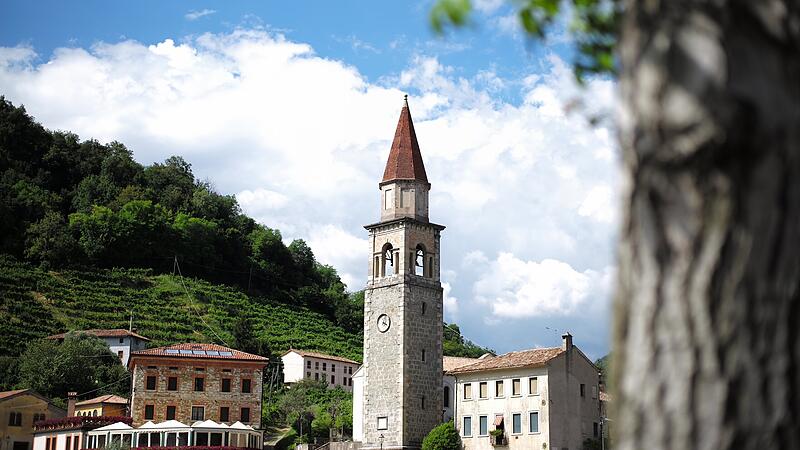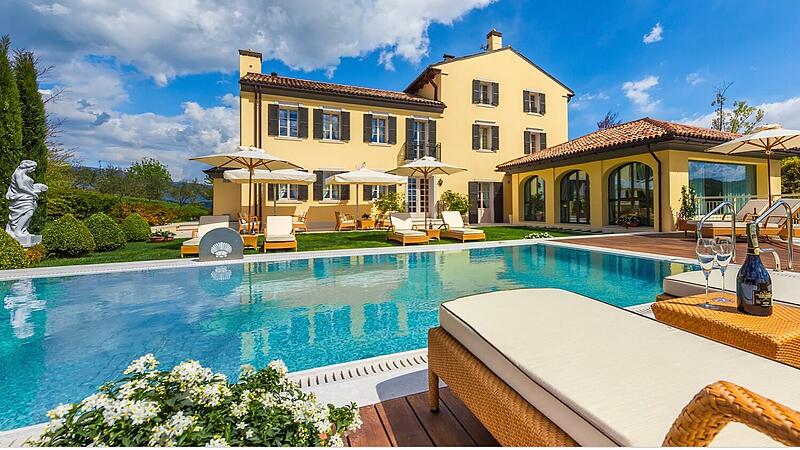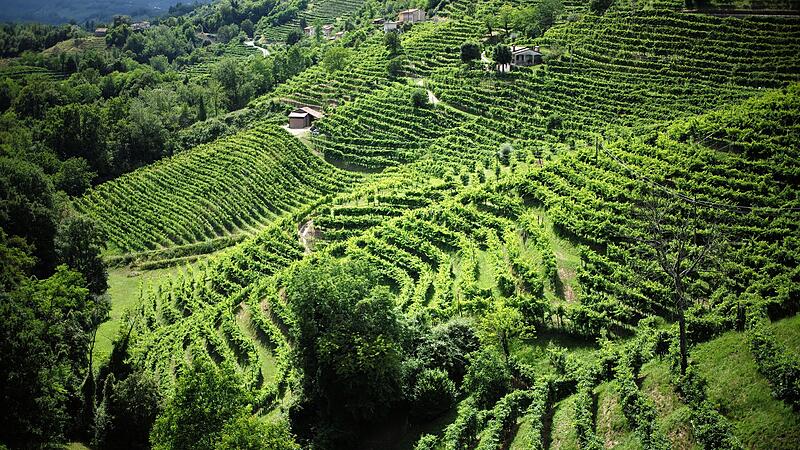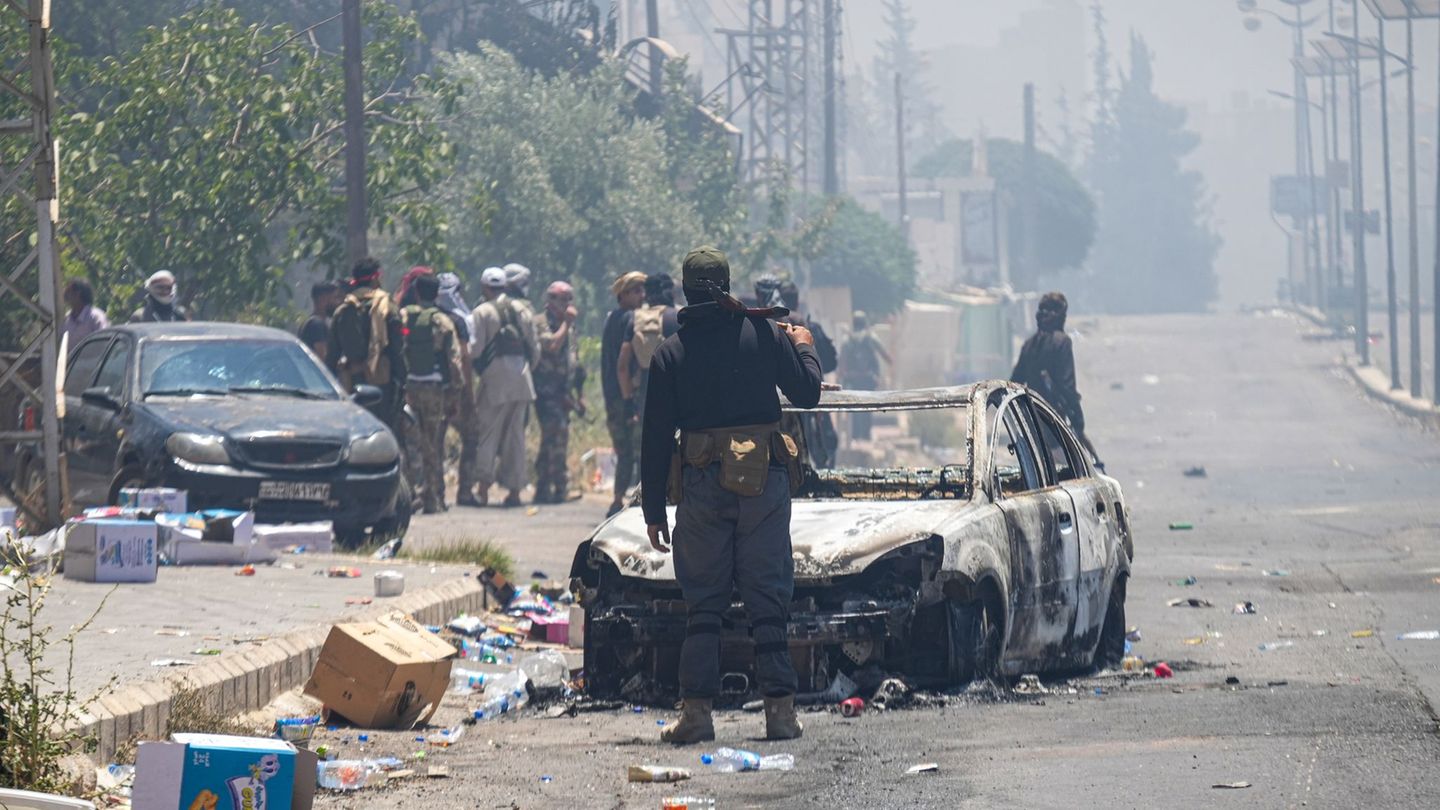In October 1918 the decisive third battle of the Piave was fought between Piave and Vittorio Veneto, thus sealing the downfall of the Danube monarchy. Grandfather, barely 18 years old, was there. His diaries, which we found later, bear witness to the drama of an emaciated army exhausted by five long years of war. In 1917, in a surprise attack (“the miracle of Karfreit”), the Austrians drove Italy’s armies across the Tagliamento into the plain and up to the Piave. 300,000 Italians were captured, 400,000 deserted. It was supposed to be a Pyrrhic victory, the front was overstretched, and no decision could be forced in two Piave battles. For October 24, 1918, General Armando Diaz, as the Italian commander-in-chief, ordered the counter-offensive, the crossing of the flooded Piave. “Blood and water in the trenches, constant barrage, when will it all stop?” Grandfather wrote.
Italy drove Austria’s fifth and sixth armies apart, counterattacks under General Boroevic (“the lion of the Isonzo”) were unsuccessful, Vittorio Veneto was taken in a sickle cut, and street names throughout Italy commemorate the city of victory today.
For grandfather, the war was his lifelong trauma. Whenever he wore his knickerbockers and Styrian jacket in the summer, packed his backpack with bacon and bread, and stick in his right hand, we knew he was going to the Veneto, to Monte Grappa, to the Piave. Circled on his old maps were the names that played a role in the orders of the day at the time, or better for him: Bassano, Farra di Soligo, San Vito al Tagliamento, Monte Grappa.
More than 100 years later, it’s people vacationing on the outskirts who end up here. It’s good for the Prosecco country, it keeps its character. Our base is the recommended Relais d’Arfanta, hidden and difficult to find, located below Tarzo in the vineyards, a house with a few rooms, run by the South Tyrolean Renate Ortner. Her partner Giovanni runs the Michelin-star restaurant La Corte in Follina, we take the green menu, Giovanni explains the essence of Prosecco to us. If you want to drink it dry, you have to order Extra Brut or Brut, Extra Dry and Dry have residual sugar. In 2009, the grape was renamed Glera and the designation of origin was introduced. This slowed down the mass development of cheap Prosecco, which was transported to northern Europe in tankers and bottled there (also in cans). The best Prosecco bears the addition of Cartizze and comes from two villages in Valdobbiadene.


Sport, pleasure and world history
Giovanni’s hobby is road cycling – his guests are tourists from overseas who combine sport and enjoyment here. In general, the Prosecco is a great racing bike area. We do laps, via Refrontolo towards Vittorio Veneto, the next day north towards San Boldo. This pass road leading to Feltre in Belluno is a masterpiece of Austrian engineering. It is called the “Road of 100 Days”. In such a short time, Austrian engineers built five tunnels, one on top of the other, in the steep wall at the top of the pass. A traffic light regulates the traffic, when we stop at the traffic light we get into conversation with an American manager of the Fischer ski factory in Rieder. Fischer produces shoes and bindings in the Valdobbiadene area – another connection between Veneto and Austria. The global sporting goods industry has settled in the Bassano area and has Italian factories manufacture it. If you drive from the Prosecco area to Treviso, the city of radicchio, you will recognize this specialization from the many sports outlets that are located on the side of the road.
Back in time and Prosecco, which is a chessboard on which world history was written. It’s 33 degrees, we’re sitting in the “River Side” bar in Nervesa della Battaglia on the banks of the Piave, historic guns are a reminder of the decisive battle more than a hundred years ago. The “Arditi”, storm fighters, initially fought their way over three bridges over the Piave, the other bridges had been torn down by the flood. A path leads from Vidor in the west to Susegana (La Grande Guerra da Ponte a Ponte), charts, memorials and memorials line the route.


Source: Nachrichten




